Abstract
Separate terms for substrate limitation and product inhibition were incorporated into an equation describing the rate of cell growth for the steady-state fermentation of lactose to lactic acid with neutralization to a constant pH by ammonia. The equation was incorporated into a generalized mathematical model of a dialysis continuous process for the fermentation, developed previously, in which the substrate is fed into the fermentor and the fermentor contents are dialyzed through a membrane against water. The improved model was used to simulate the fermentation on a digital computer, and the results agreed with previous experimental tests using whole whey as the substrate. Further simulations were then made to guide experimental tests using deproteinized whey as the substrate. Dried cheese-whey ultrafiltrate was rehydrated with tap water to contain 242 mg of lactose per ml, supplemented with 8 mg of yeast extract per ml, charged into a 5-liter fermentor without sterilization, adjusted in pH (5.5) and temperature (44°C), and inoculated with an adapted culture of Lactobacillus bulgaricus. The fermentor and dialysate circuits were connected, and a series of steady-state conditions was managed nonaseptically for 71 days. The fermentation of deproteinized whey relative to whole whey, with both highly concentrated, resulted in similar extents of product accumulation but at a lesser rate.
Full text
PDF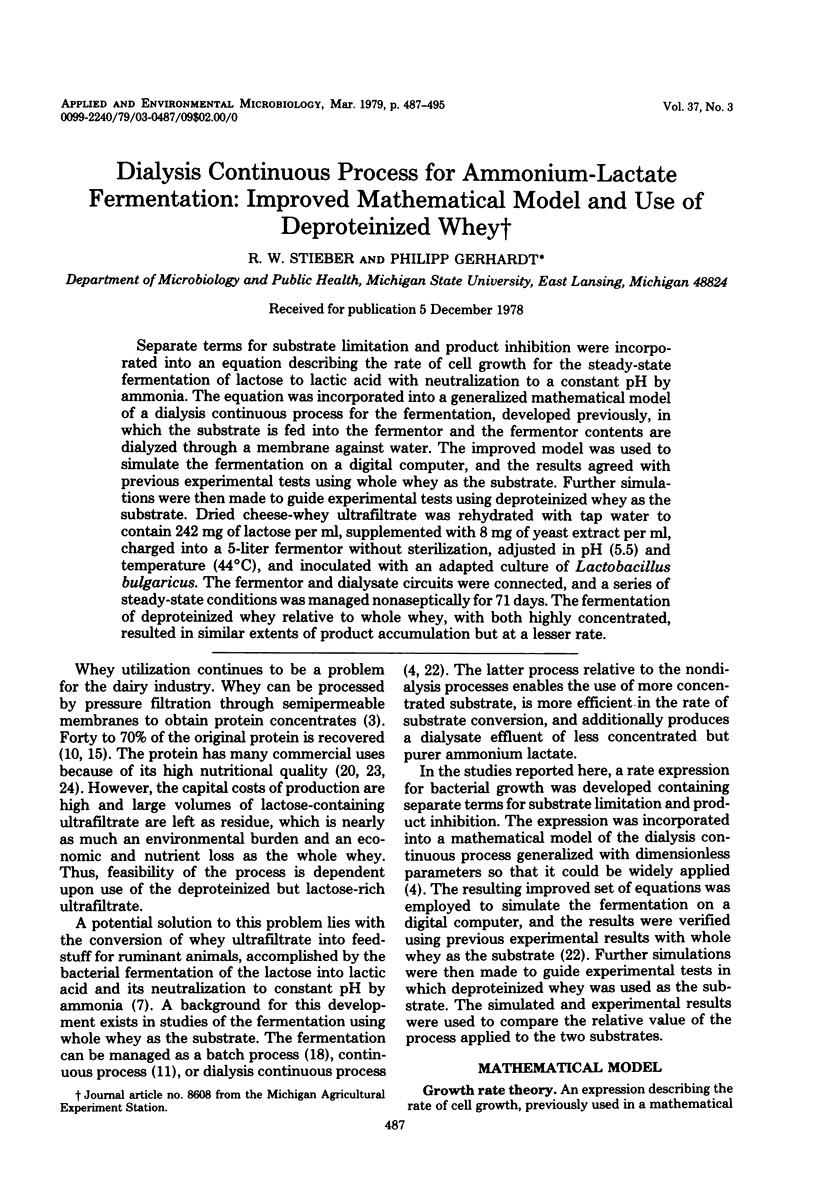
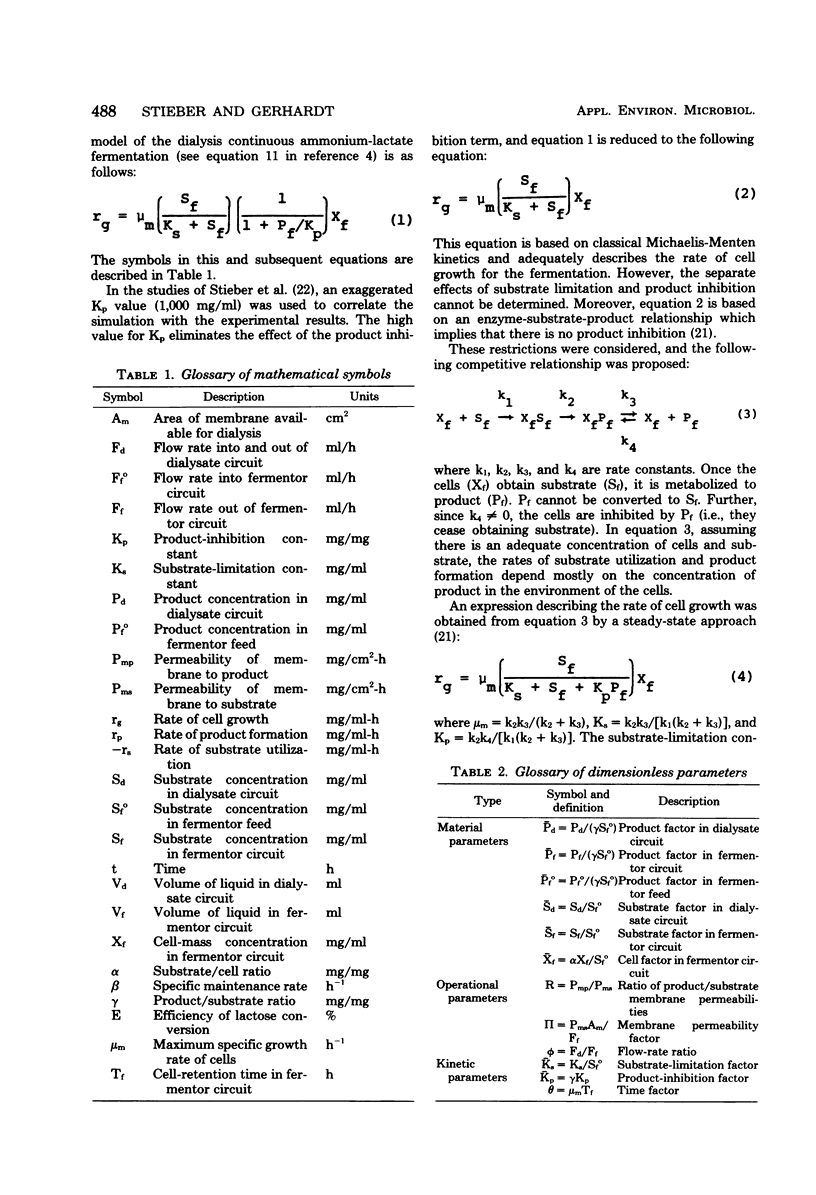
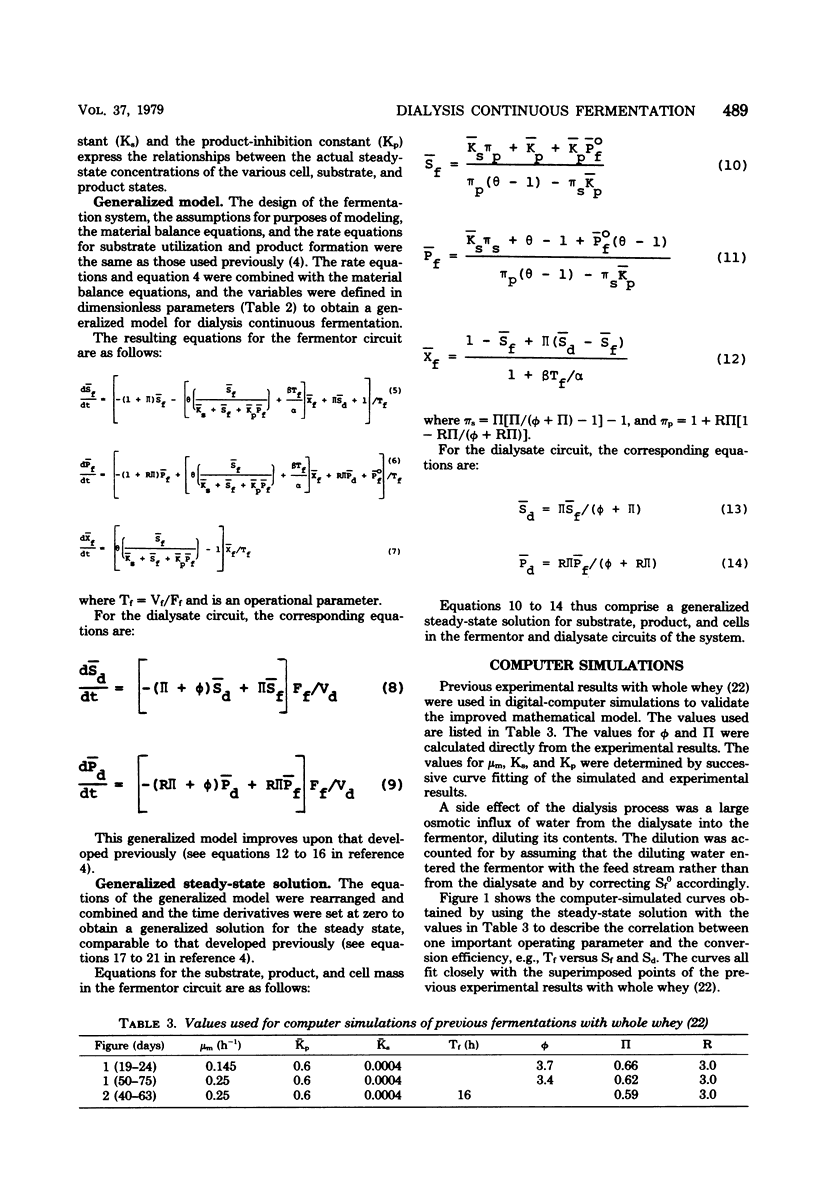
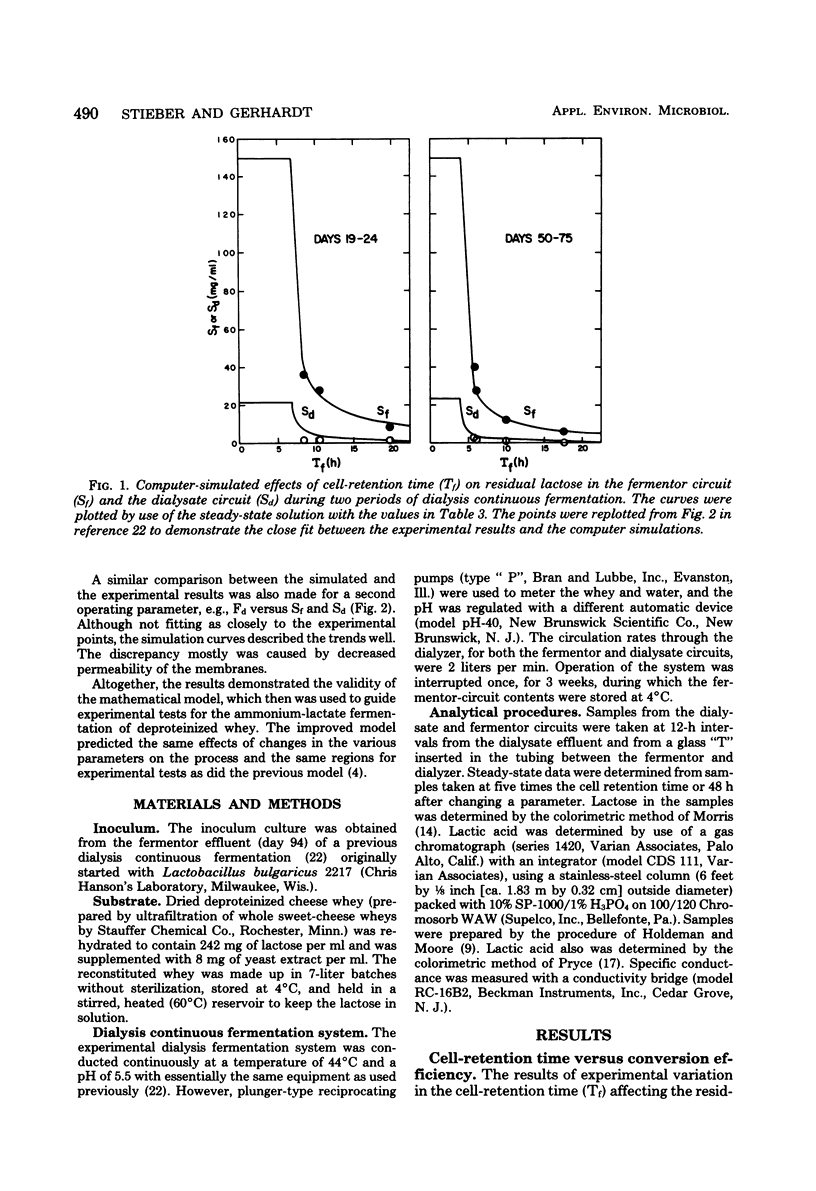
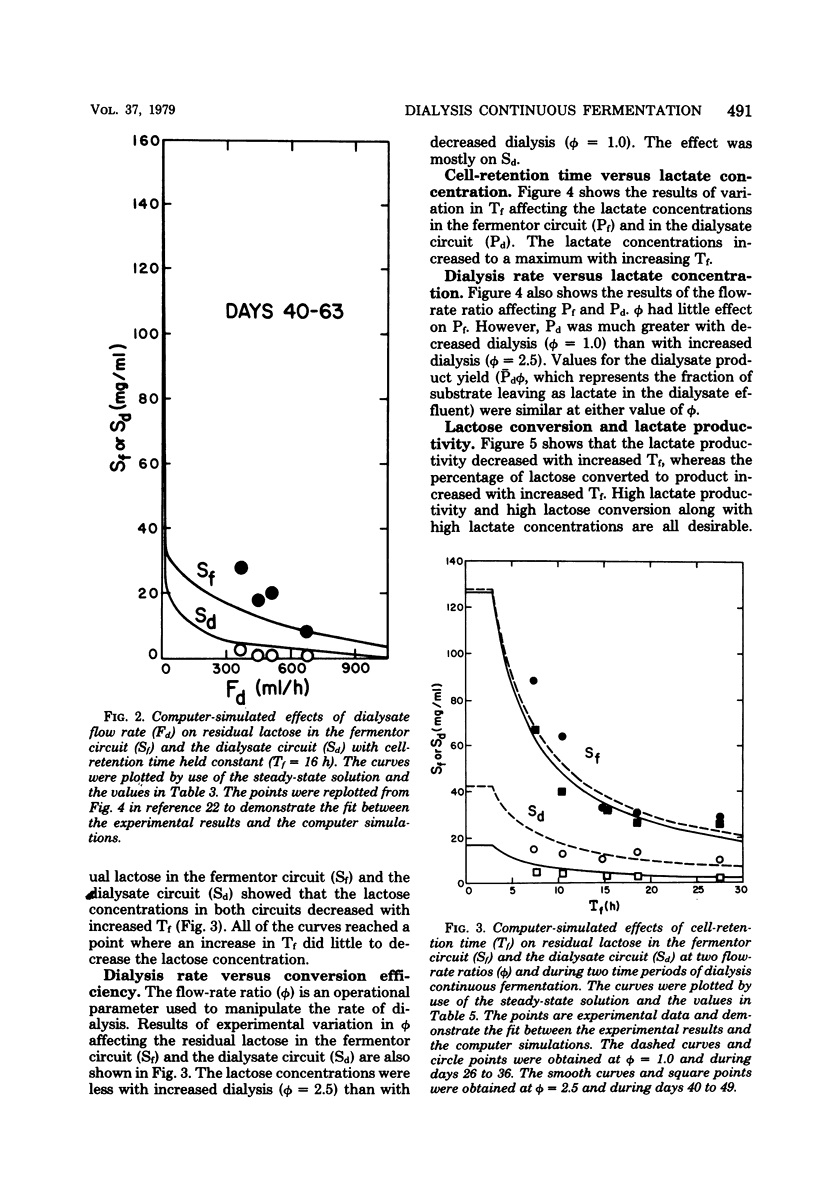
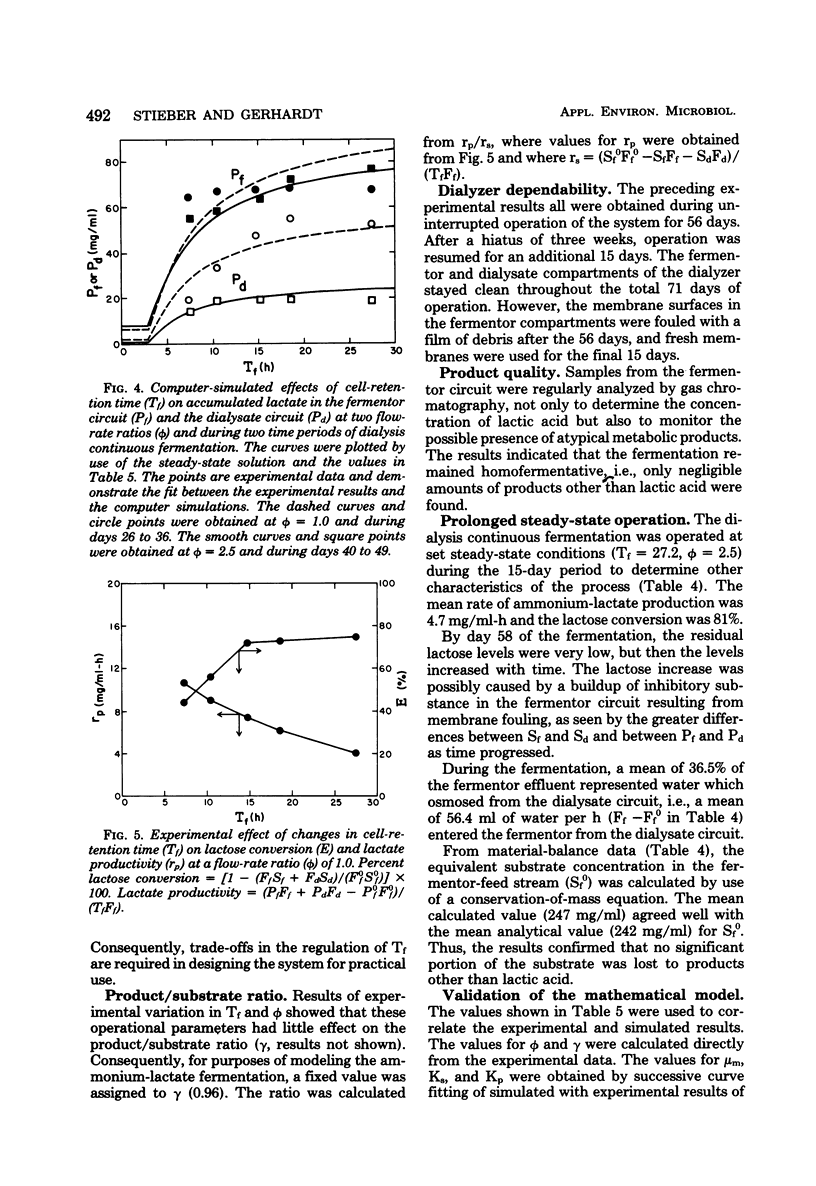
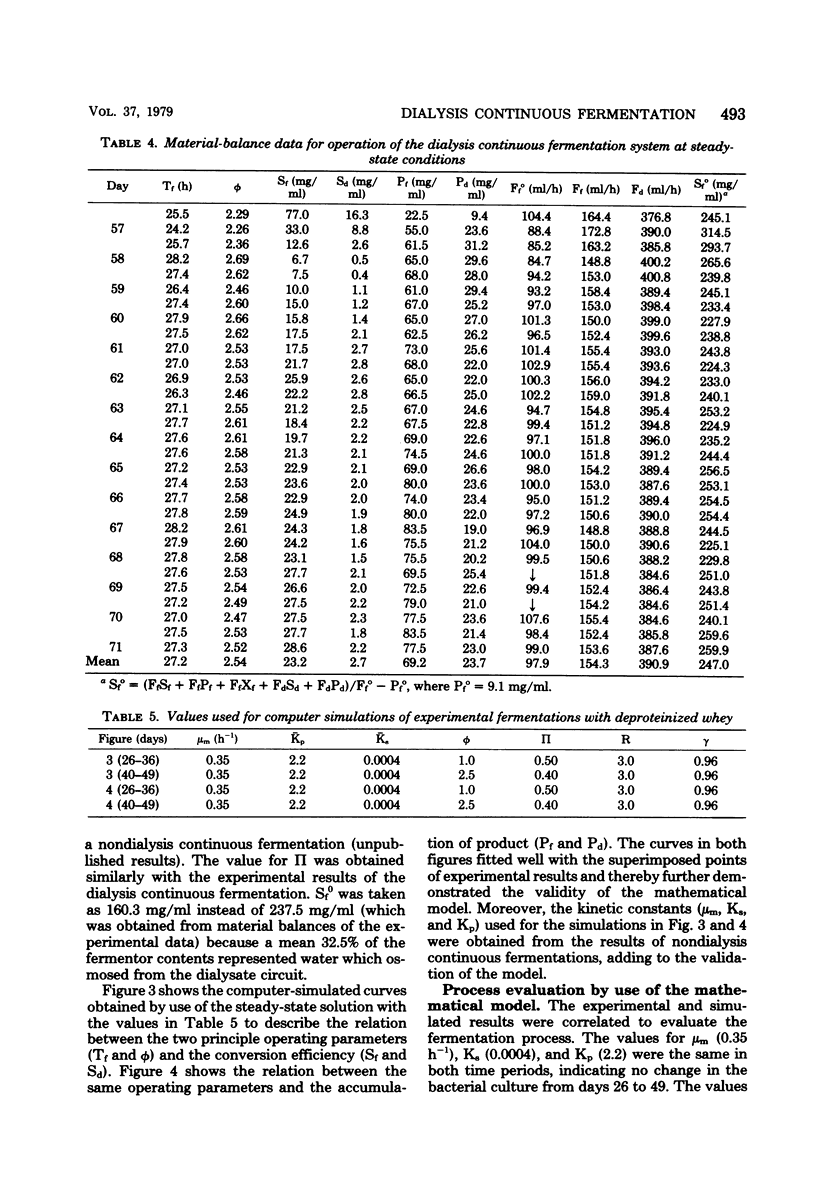
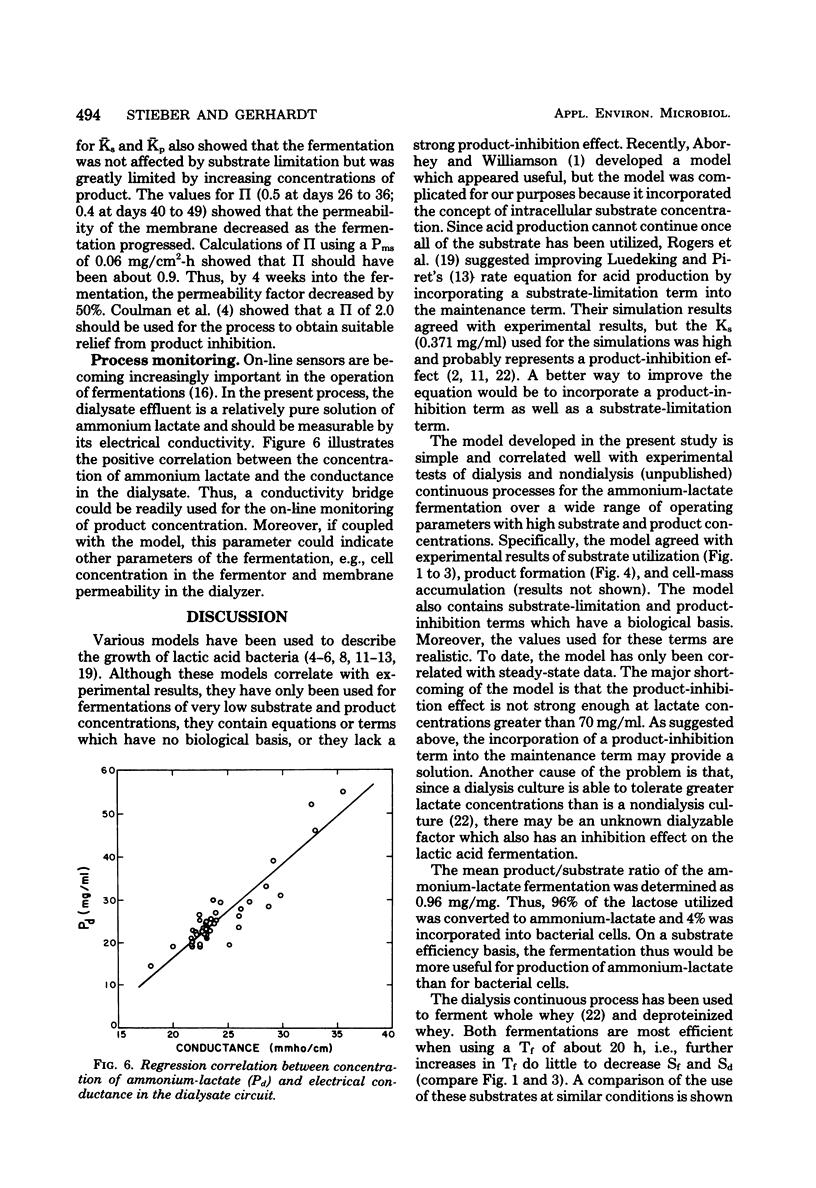
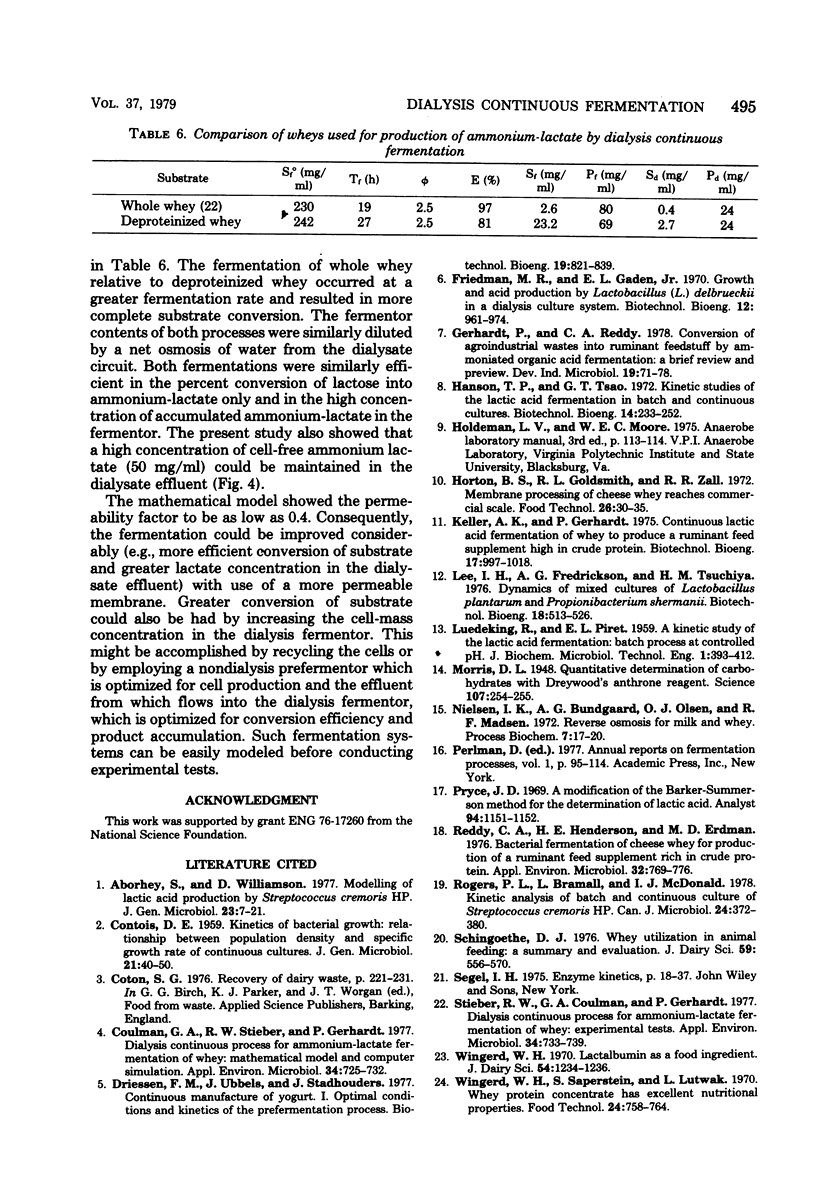
Selected References
These references are in PubMed. This may not be the complete list of references from this article.
- CONTOIS D. E. Kinetics of bacterial growth: relationship between population density and specific growth rate of continuous cultures. J Gen Microbiol. 1959 Aug;21:40–50. doi: 10.1099/00221287-21-1-40. [DOI] [PubMed] [Google Scholar]
- Coulman G. A., Stieber R. W., Gerhardt P. Dialysis continuous process for ammonium-lactate fermentation of whey: mathematical model and computer simulation. Appl Environ Microbiol. 1977 Dec;34(6):725–732. doi: 10.1128/aem.34.6.725-732.1977. [DOI] [PMC free article] [PubMed] [Google Scholar]
- Friedman M. R., Gaden E. L., Jr Growth and acid production by Lactobacillus (L) delbrueckii in a dialysis culture system. Biotechnol Bioeng. 1970 Nov;12(6):961–974. doi: 10.1002/bit.260120608. [DOI] [PubMed] [Google Scholar]
- Lee I. H., Fredrickson A. G., Tsuchiya H. M. Dynamics of mixed cultures of Lactobacillus plantarum and Propionibacterium shermanii. Biotechnol Bioeng. 1976 Apr;18(4):513–526. doi: 10.1002/bit.260180406. [DOI] [PubMed] [Google Scholar]
- Morris D. L. Quantitative Determination of Carbohydrates With Dreywood's Anthrone Reagent. Science. 1948 Mar 5;107(2775):254–255. doi: 10.1126/science.107.2775.254. [DOI] [PubMed] [Google Scholar]
- Pryce J. D. A modification of the Barker-Summerson method for the determination of lactic acid. Analyst. 1969 Dec;94(125):1151–1152. doi: 10.1039/an9699401151. [DOI] [PubMed] [Google Scholar]
- Reddy C. A., Henderson H. E., Erdman M. D. Bacterial fermentation of cheese whey for production of a ruminant feed supplement rich in curde protein. Appl Environ Microbiol. 1976 Dec;32(6):769–776. doi: 10.1128/aem.32.6.769-776.1976. [DOI] [PMC free article] [PubMed] [Google Scholar]
- Rogers P. L., Bramall L., McDonald I. J. Kinetic analysis of batch and continuous culture of Streptococcus cremoris HP1. Can J Microbiol. 1978 Apr;24(4):372–380. doi: 10.1139/m78-063. [DOI] [PubMed] [Google Scholar]
- Stieber R. W., Coulman G. A., Gerhardt P. Dialysis continuous process for ammonium-lactate fermentation of whey: experimental tests. Appl Environ Microbiol. 1977 Dec;34(6):733–739. doi: 10.1128/aem.34.6.733-739.1977. [DOI] [PMC free article] [PubMed] [Google Scholar]


